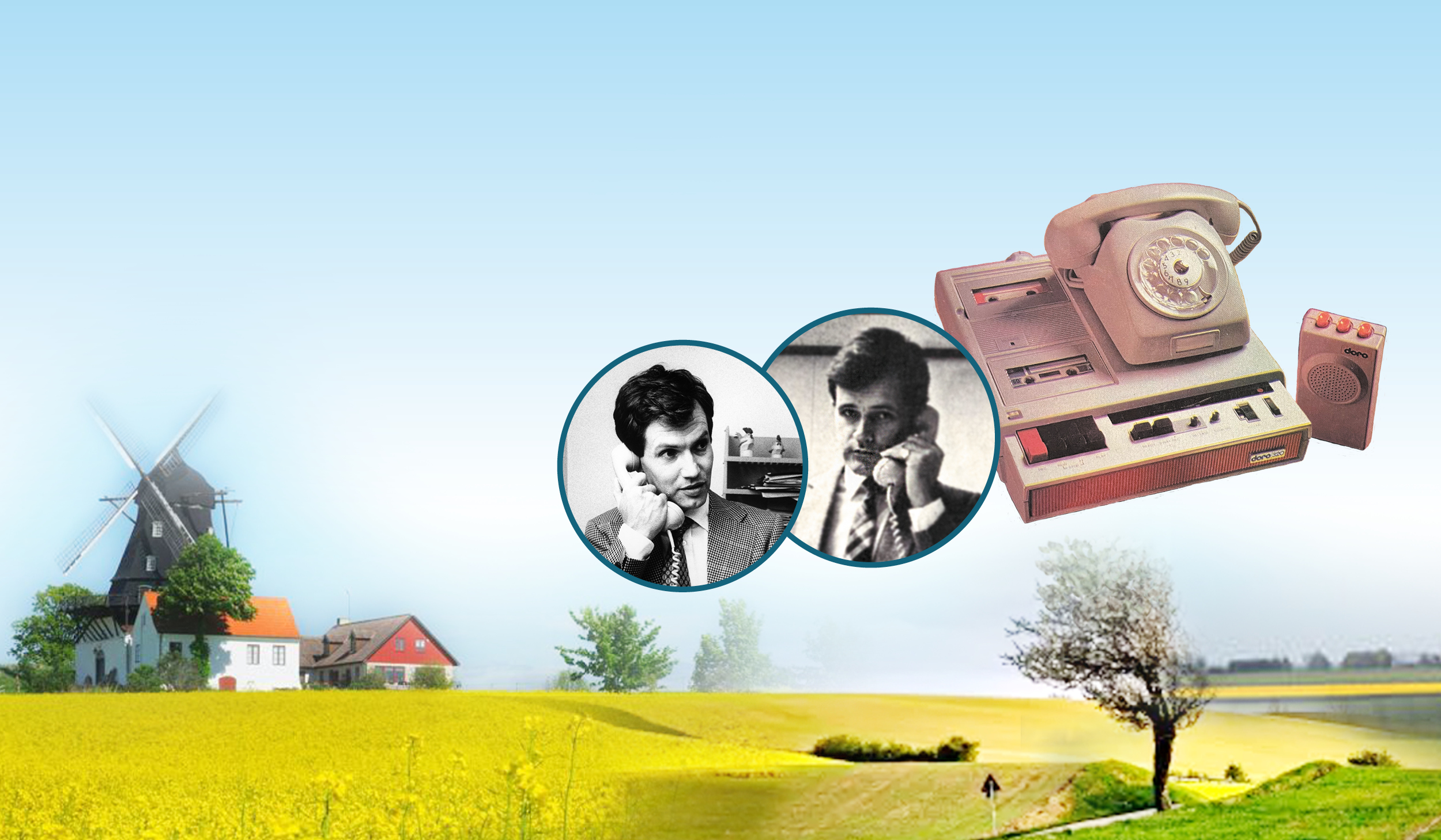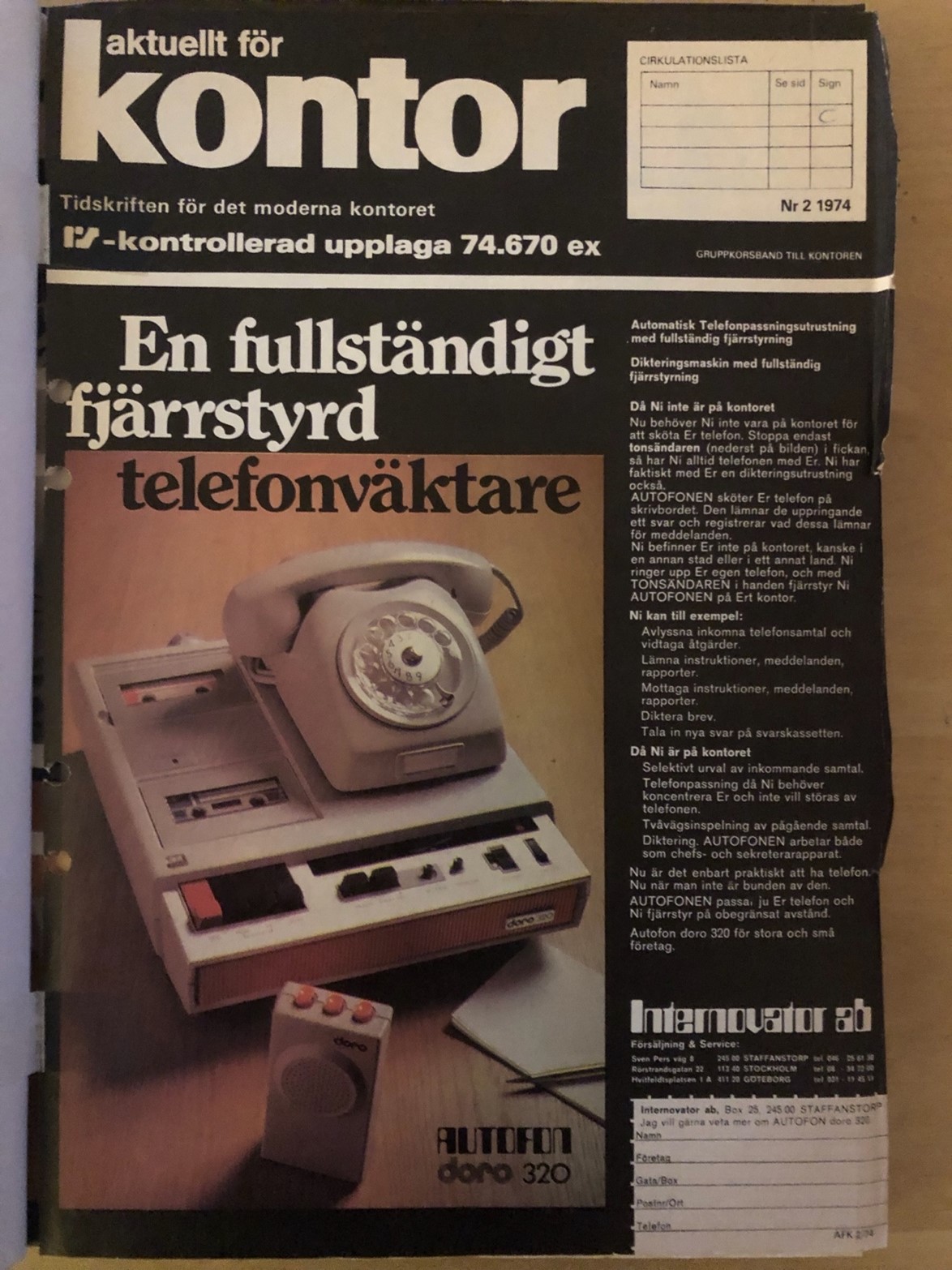Menu

1974 - 1979
It was 1974. ABBA was rocketing towards stardom after winning the Eurovision Song Contest with Waterloo in Brighton. In Hungary a professor named Rubik invented his famously puzzling cube. And in Sweden two young entrepreneurs took a chance on a machine they called “AUTOFONEN”.

The first ad and first model introduced by Intervonator in 1974 – the AUTOFON doro 320
Those two men were Claes Bühler and Olle Fagring who had met and become good friends a few years earlier while studying at Lund University. Olle had gone on to work for Volvo back home in Gothenburg, while Claes was recruited to stay in Lund and work for Tetra Pak.
Olle approached Claes with a gadget he had come across and wanted to introduce in Sweden – a bulky telephone answering machine that cost thousands of kronor. Claes was game, so they jumped on a plane to San Francisco to secure a deal giving them exclusive rights to sell the machine in Sweden. On the way over they came up with a name for their new company, Internovator, which would later become Doro.
After taking out a full-page ad for the front cover of “Aktuellt for kontor” – a magazine “for the modern office” – the calls began to pour in. The first shipment of 50 arrived by boat and were sold out right away, mainly to small businesses such as lawyer offices and dentist practices.
Looking back, Claes says it was truly a “trollerimaskin” at the time - a magic box for taking messages instead of a real person, usually the wife of a small business owner. According to Claes, Televerket considered it an “odd” product that didn’t really fit into their assortment, so the state-owned telecom monopoly relaxed its grip and allowed other companies to sell them provided the machines first be submitted for approval.
Claes and Olle quit their regular jobs and never looked back, introducing more models over the next few years. The most advanced of them of offered not only the ability to call in and play back messages via remote control, but also the ability to change the outgoing message while out travelling. It sold for 4,950 kronor before V.A.T., equivalent to just over 37,000 (€ 3,300) in 2024, 50 years later.
Their success continued throughout the decade and business was thriving until unforeseen things began to happen with the dollar. But that’s another story.
Copyright © 2025 Doro AB. All rights reserved